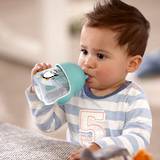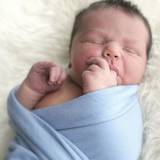Buying guide to babies thermometers
|
Would you know if your baby’s room or bath was too hot for them or whether they were running a temperature? Unlike adults, babies aren’t able to tell us how they’re feeling, so thermometers designed for babies and small children are important pieces of equipment that help take out some of the guess work. Check out these useful tips on things you need to know about thermometers for babies.
|
You might also be interested in ...
Introducing cups
Teaching your baby to drink from a cup is always going to be a messy milestone, so be prepared! So when’s the right time to start introducing your baby to cups? Find out more about getting started and types of cups that are available.
Baby swaddling techniques
Check out these swaddling techniques on how to swaddle a baby. Swaddling simply means wrapping a baby securely. Swaddling is a great technique to calm a fussy baby and makes settling to sleep much easier. Many babies enjoy being swaddled well past 6 months old. There are many different ways to swaddle, but try these two different techniques and see which works best for you.







Buying guide to babies thermometers
Looking to buy a baby thermometer, but not sure where to start? These tips will help you on your way.
Unlike adults, babies aren’t able to tell us how they’re feeling, so thermometers designed for babies and young children are important pieces of equipment that help take out some of the guess work.
Check out these useful tips on things you need to know about thermometers before you go shopping.
1. Baby bath thermometers
The ideal temperature for a baby’s bath is around 35-38°C. Run the cold water first and then top up with hot water, rather than trying to cool down a bath that’s too hot.
Baby bath thermometers will let you know at a glance whether the water is too hot for your baby or safe enough for them to sit in.
Some baby bath thermometers will let you know the exact temperature of the water, while others will simply let you know whether the water is too hot, too cold or just right.
As well as using a bath thermometer, also check the temperature of the water with your elbow before bathing your baby to make sure it’s lukewarm in case the thermometer isn’t working properly.
Baby bath thermometers are also a great way of making bath time routines more fun for your baby with lots of child-friendly designs available.
Some are even built into waterproof toys that your baby can splash around with.
2. Baby room thermometers
A thermometer in your baby’s bedroom will let you know how warm or cool it is and whether it’s a safe sleeping environment for them to sleep in.
A safe room temperature for babies is between 16-20°C, with light bedding or a lightweight well-fitting baby sleep bag.
There are so many baby room thermometers to choose from in terms of price, style and function, you’re spoilt for choice.
You can buy freestanding devices as well as baby room thermometers that fix to the wall.
Glow in the dark room thermometers are ideal for checking the room temperature without having to turn the light on and disturbing your baby's sleep.
Some baby monitors double up as room thermometers and display the temperature of the room.
Whilst you want to keep your baby warm and cosy at night, it's important not to let them get too hot.
A good rule to follow is to dress them in one more layer than you have on or give them an extra blanket whilst they’re sleeping, and even put on a hat for small babies.
To ensure your baby’s not too hot feel their tummy or the back of their neck. Remove a blanket or a piece of clothing if they’re feeling too warm.
3. Baby thermometers
There’s a vast array of baby thermometers on the market, ranging from forehead strips to ones that take your baby’s temperature through their ears.
Some give you an exact temperature, whilst others give you an idea of whether your child’s temperature is too high or too low.
The majority of thermometers are safe for babies through to older children, but always check the manufacturer’s instructions before using.
Ear (or tympanic) thermometers are considered to be the most effective. They are easy to use and it only takes a matter of seconds for them to work and give out an accurate reading.
Ear thermometers measure the temperature of blood vessels crossing the ear drum, which are quite close to the body’s core temperature.
Just be sure to place the thermometer correctly in your baby's ear, following the device’s instructions so that you get the most accurate reading possible.
Forehead strips aren’t considered to be very accurate because they only show the temperature of your baby's skin, whilst mercury-in-glass thermometers that you put under your baby's tongue are highly poisonous if the glass is broken and they come into contact with it.
The ‘normal’ temperature for a baby ranges from 36.4 degrees Celsius to 36.8 degrees Celsius. However each baby has a slightly different core temperature so what’s ‘normal’ will vary slightly from child to child.
It’s a good idea to take your baby's temperature when you know they are well so you can use this as a gauge when they are sick.
If your baby’s under 3 months old and feels hot and has a temperature of 38 degrees Celcius or higher, see your doctor.
For older children contact your GP if their temperature exceeds 38 degrees Celcius or if you have any other concerns.
Before you take your baby’s temperature, remove any blankets or multiple layers of clothing and check that the room temperature is at around 18-21°C to ensure your baby is not too hot or too cold.
More kids articles to enjoy:
- Bathing your baby
- When to see a doctor
- Shopping for new babies
Image source: koddie.nl